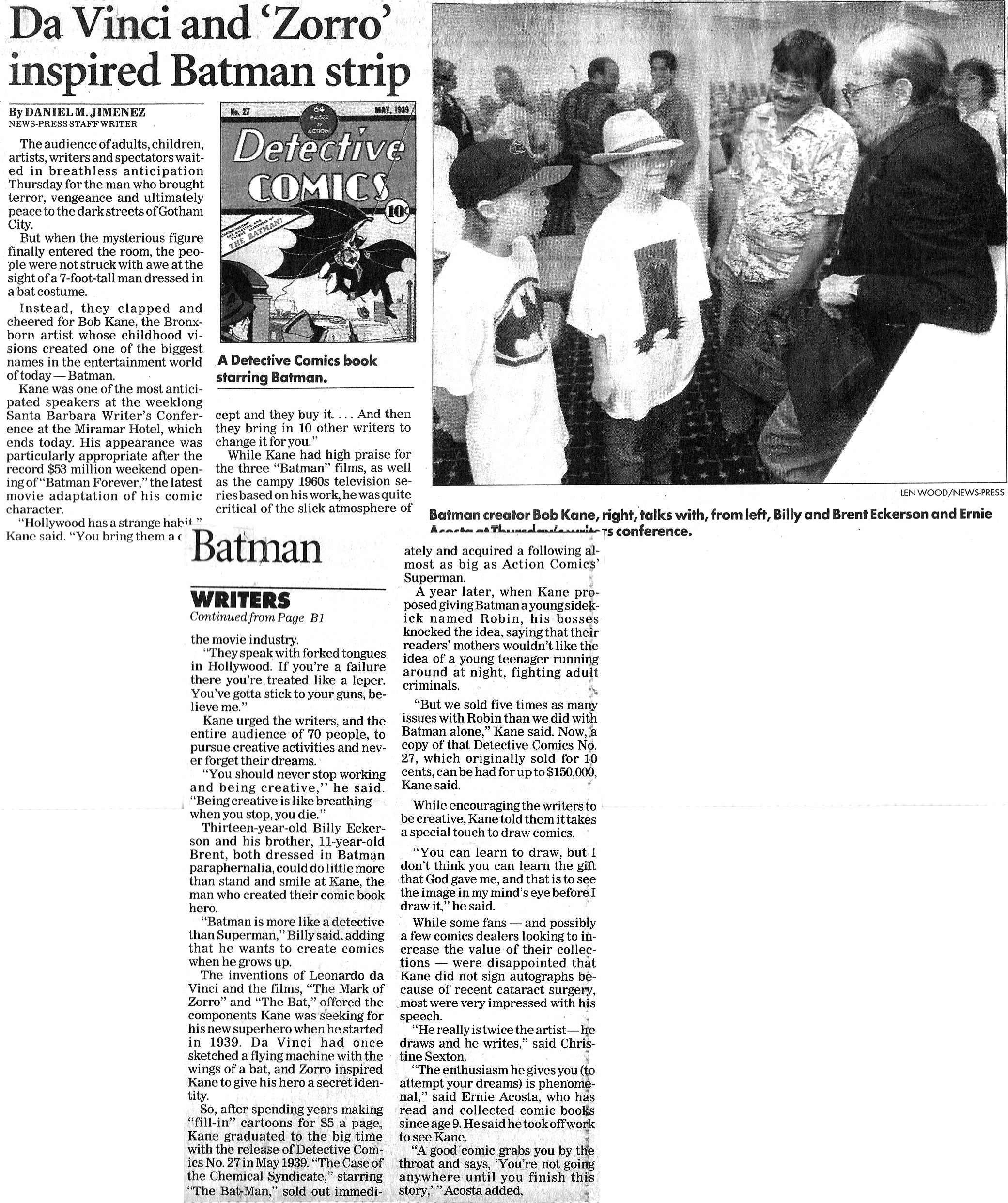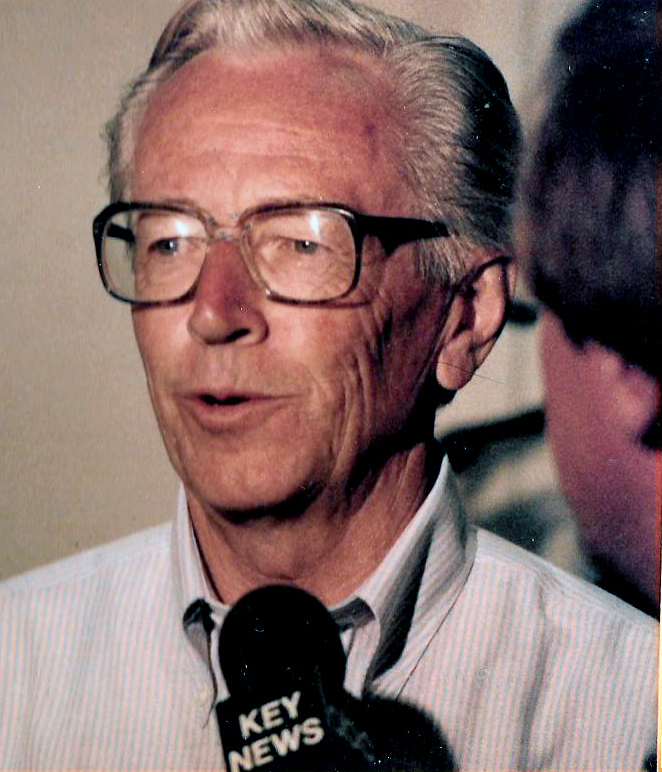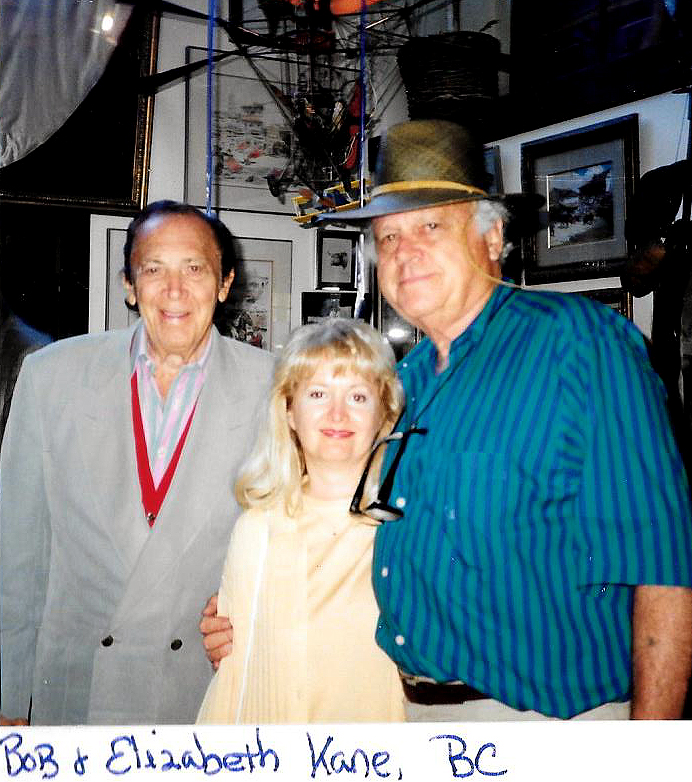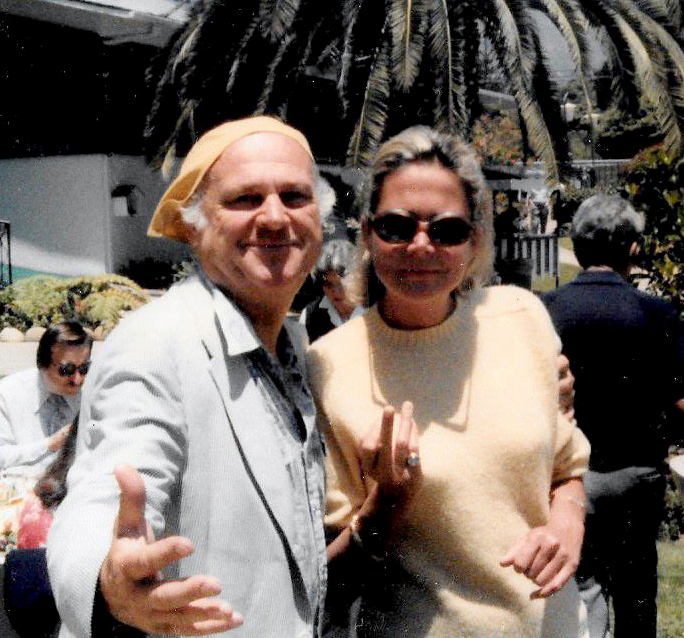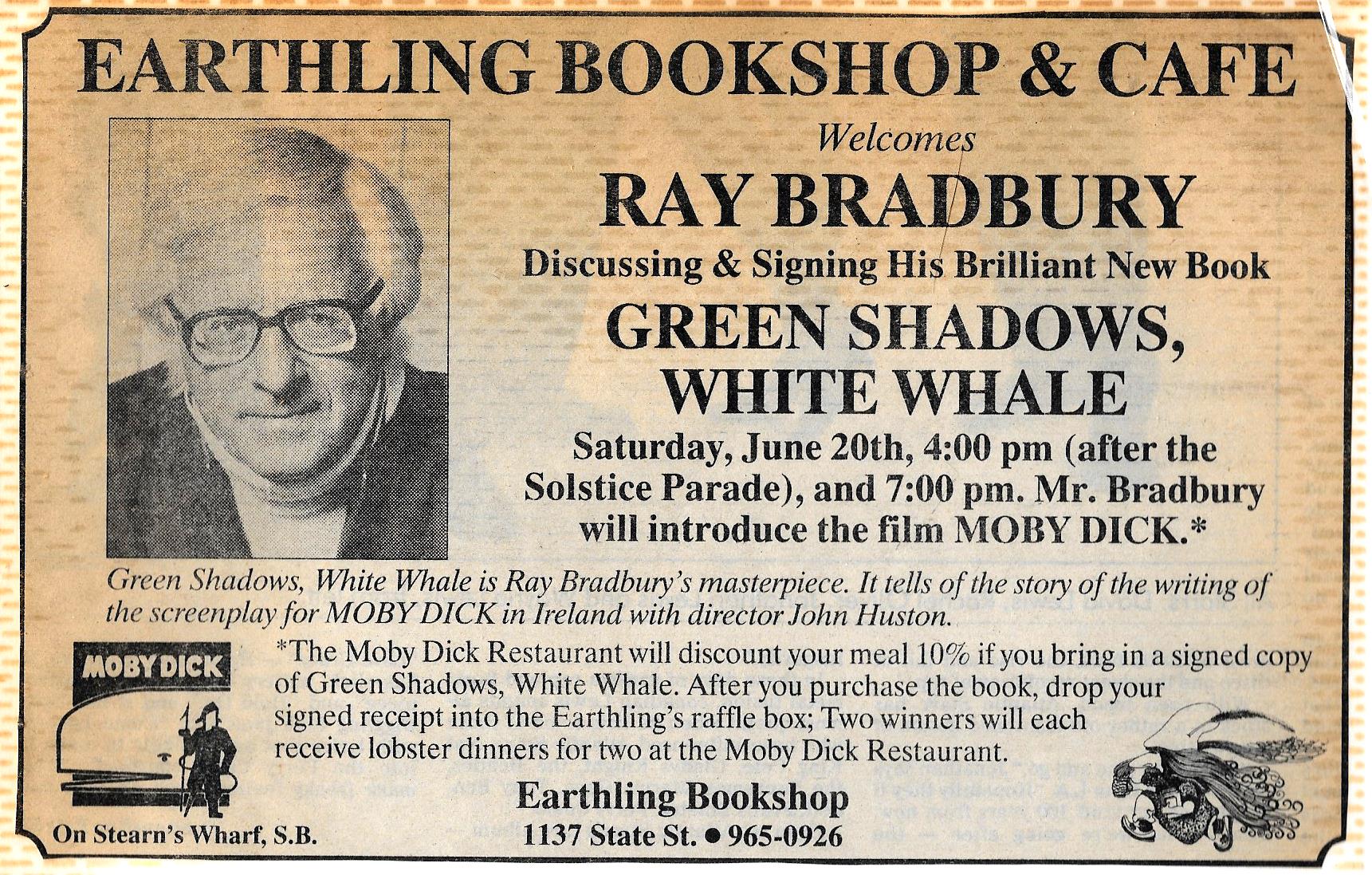An excerpt from the upcoming book by Armando Nieto, Mary Conrad, and Matt Pallamary: At the 1995 SBWC Bob Kane explained how he finally got his moment in the limelight with the resurgence of the Batman franchise. He opened his 4:00 pm lecture on Wednesday afternoon talking about growing up in the Bronx to the sound of Bing Crosby’s voice—“ba ba ba boom!”
Kane came up with the concept for Batman in 1939.
Speaking after a weekend when a Batman movie garnered $53 million Kane had a lot to say about Hollywood.
“Hollywood had a strange habit,” he began. “You bring them a concept and they buy it, and then they bring in ten other writers to change it for you.”
Kane expressed praise for all the Batman movies, and for the ‘60s television show based on his characters. He encouraged the audience to stay true to their characters and passions, no matter what. Regarding the movie industry itself, he said, “They speak with forked tongues in Hollywood. If you’re a failure there you’re treated like a leper.
“You’ve got to stick to your guns. You should never stop working and being creative. Being creative is like breathing. When you stop, you die.”
In his Santa Barbara News-Press article on the lecture, Daniel M. Jimenez talked with thirteen-year-old Billy Eckerson and his eleven-year-old brother Brent, both wearing Batman paraphernalia.
“Batman is more like a detective than Superman,” Billy said, echoing the argument that fans had been having for more than fifty years. Billy said he wants to create comics when he grows up.
Batman made his first appearance in Detective Comics No. 27 in May of 1939 with “The Case of the Chemical Syndicate,” starring “The Bat Man.” When the first printing sold out immediately, subsequent issues built a following almost as big as Superman. A year later Kane approached his publishers about adding a teen-aged side kick named Robin. Despite his bosses grumbling that mothers wouldn’t approve of a young boy running around at night with the caped crusader, sales of Batman with Robin outsold Batman alone, five to one.
In 1995, a copy of that original Batman Detective Comics No. 27 was worth $150,000, depending on condition.
